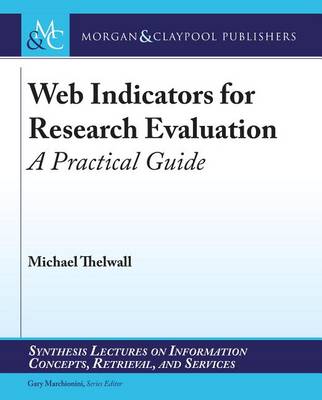Synthesis Lectures on Information Concepts, Retrieval, and S
2 total works
In recent years there has been an increasing demand for research evaluation within universities and other research-based organisations. In parallel, there has been an increasing recognition that traditional citation-based indicators are not able to reflect the societal impacts of research and are slow to appear. This has led to the creation of new indicators for different types of research impact as well as timelier indicators, mainly derived from the Web. These indicators have been called altmetrics, webometrics or just web metrics. This book describes and evaluates a range of web indicators for aspects of societal or scholarly impact, discusses the theory and practice of using and evaluating web indicators for research assessment and outlines practical strategies for obtaining many web indicators. In addition to describing impact indicators for traditional scholarly outputs, such as journal articles and monographs, it also covers indicators for videos, datasets, software and other non-standard scholarly outputs. The book describes strategies to analyse web indicators for individual publications as well as to compare the impacts of groups of publications. The practical part of the book includes descriptions of how to use the free software Webometric Analyst to gather and analyse web data. This book is written for information science undergraduate and Master's students that are learning about alternative indicators or scientometrics as well as Ph.D. students and other researchers and practitioners using indicators to help assess research impact or to study scholarly communication.
Webometrics is concerned with measuring aspects of the web: web sites, web pages, parts of web pages, words in web pages, hyperlinks, web search engine results. The importance of the web itself as a communication medium and for hosting an increasingly wide array of documents, from journal articles to holiday brochures, needs no introduction. Given this huge and easily accessible source of information, there are limitless possibilities for measuring or counting on a huge scale (e.g., the number of web sites, the number of web pages, the number of blogs) or on a smaller scale (e.g., the number of web sites in Ireland, the number of web pages in the CNN web site, the number of blogs mentioning Barack Obama before the 2008 presidential campaign). This book argues that it can be useful for social scientists to measure aspects of the web and explains how this can be achieved on both a small and large scale. The book is intended for social scientists with research topics that are wholly or partly online (e.g., social networks, news, political communication) and social scientists with offline research topics with an online reflection, even if this is not a core component (e.g., diaspora communities, consumer culture, linguistic change). The book is also intended for library and information science students in the belief that the knowledge and techniques described will be useful for them to guide and aid other social scientists in their research. In addition, the techniques and issues are all directly relevant to library and information science research problems.

